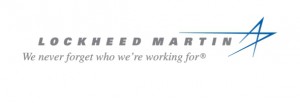 With the help of Lockheed Martin, the U.S. Department of Defense is making major strides in its ongoing initiative to quickly and efficiently share the vast volume of intelligence, surveillance and reconnaissance (ISR) data available to users with access to the Distributed Common Ground System (DCGS).
With the help of Lockheed Martin, the U.S. Department of Defense is making major strides in its ongoing initiative to quickly and efficiently share the vast volume of intelligence, surveillance and reconnaissance (ISR) data available to users with access to the Distributed Common Ground System (DCGS).
The DCGS Multi-Service Execution Team office awarded Lockheed Martin a $2.6 million contract to upgrade the DCGS Integration Backbone, or DIB, the software infrastructure that allows intelligence sharing between national agencies, coalition partners and military services.
The DCGS integrates and draws intelligence data from various manned and unmanned ISR sensors and systems, then correlates that data into a coherent, easily interpreted picture for the end user. The DIB, with its open standards architecture and revolutionary horizontal integration approach, is the software backbone that connects these previously stove-piped ISR systems to enable intelligence sharing through the DCGS family of systems (i.e., AF DCGS, DCGS-A).
“Lockheed Martin is proud to have this vital role in helping the DCGS team achieve its vision for maximizing the value of DCGS to commanders, warfighters, and intelligence agencies,” said Jim Quinn, vice president of C4ISR Systems for Lockheed Martin IS&GS-Defense. “The latest DIB upgrade will enable our partners to securely share intelligence faster than ever before.”
For the latest version of the DIB Lockheed Martin developed the Distributed Data Framework (DDF), an enhancement that uses Free and Open Source Software, which reduces integration and lifecycle costs for customers and provides U.S. partners with improved access to DCGS data without having to purchase expensive commercial off the shelf software licenses. Capabilities in this upgrade include increased security filtering capabilities, an enhanced data ingest framework, and orders of magnitude increases in ingest and query capability.
The DDF also ushers in a new level of flexibility, modularity, and standardization for integrating new data sources, data transformation services, and user interfaces into the DIB. The key to this innovative DDF software is the modularity, which makes it simpler for new applications to be quickly integrated to solve emerging mission needs. This agile software architecture also enables Lockheed Martin to continue to improve the overall capability of the DIB by releasing new capabilities incrementally, without impacting ongoing mission operations.


















